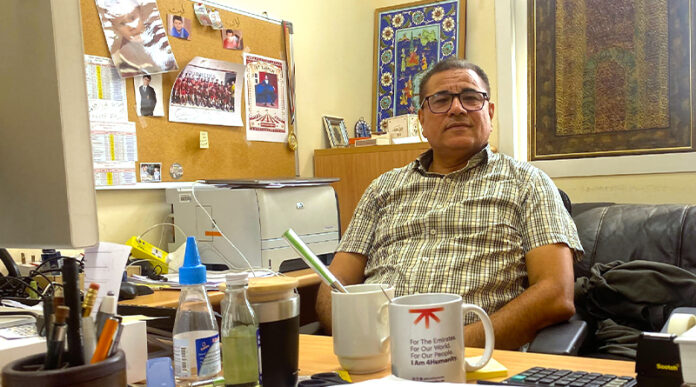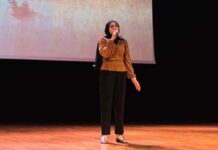By Abdullah Al Tekreeti
It would not be an exaggeration to say that the Arabic language is fundamentally an art. The careful process in which words are selected and paired in a pitch-perfect manner with other words, using millennia-old formulas is nothing short of magical. This certainly shows when one reads or listens to any form of Arab art. Whether it’s the immortal fables of “Kalila wa Dimna,” the platonic love of “Majnun wa Layla,” or the mournful music of Al-Andalus, Arab art has fascinated many, and justifiably so.
But it’s high time that we celebrate the contemporary works of Arab artists just as we’ve treasured the works of the ancients. The Arab world may seem pragmatic at times, but it’s also been home to a plethora of cultural breakthroughs, both ancient and modern. The era of post-colonialism has arguably shown just how far this capacity can reach if fueled correctly.
With three master’s degrees, one from Tunisia, two in Comparative Literature and Arabic from Indiana University, as well as a double Ph.D. in the same subjects, Associate Professor Imed Nsiri argues that Arab culture has progressed in the past 20 years faster than western culture has in 200 years.
Having studied and taught Arab literature, poetry and music, Nsiri’s claim is far from unsubstantiated. He said that though poetry has fallen out of favor in our modern era, including in the Arab world, the tradition of Arabic poetry has maintained significant momentum, if in another form. Much like the existence of colloquial and Modern Standard Arabic creates a diglossia in language, it creates one in art too, and arguably to a larger degree.
Classical poetry, that of the likes of Abbasid, Umayyad and Andalusian poetry, is still regarded as the golden standard by the masses. However, within the circles of poets and critics, the more modern “Free Verse” has found a place as a respected art form. However, Nsiri points out that despite favoritism towards classical poetry, much, if not the entirety of modern Arabic songs are performed in colloquial Arabic. A significant amount of modern free-verse poetry, known as Nabati poetry, is also valued in the United Arab Emirates.
Moving away from poetry, certainly an Arab-centric art, Arab literature has also found its fair share of expansion throughout the 20th and 21st centuries. Nsiri hails writers like Naguib Mahfouz, winner of the 1988 Nobel Prize for Literature, and Tayeb Salih as indicators of the peaks modern Arab literature has reached. These writers functioned in a highly post-colonial era, one where the act of writing in the Arabic language was akin to holding up a rifle in defense of one’s nation against western imperialists.
Mahfouz has reached heights that few writers from the Arab world could ever dream of reaching. His name has become a staple in every Arab reader’s home. His work is even taught at the university level both in the Arab and western worlds. Equally important, Mahfouz’s work is used extensively in post-colonial work. Whether it’s to view the changes at the individual level in Egypt or to see new ideologies, like existentialism, be introduced in the Arab world.
Nsiri argues that the belief that the Arab world has stagnated when it comes to culture in a broad sense is merely a misunderstanding. Nsiri adds that though the Arab region has been largely unstable for a long period of time, that has not stopped Arabs from creating art and advancing their culture. He also identifies the “preservation” of culture as different from protecting it from outside influences. He asserts that the stagnation and eventual death of a culture only happens when it is relegated to a museum.
Nsiri cites rap as an ideal example. Arab rap is certainly a sub-category of English rap; however, whether consciously or not, Arab rappers engage in an art form similar to what their ancestors did. Nsiri draws a compelling comparison between modern Arab rap and Zajal, an Andalusian colloquial form of poetry that’s accompanied by music. This extraneous art form is only extraneous when taken at face value, according to Nsiri.
Lastly, concerning the encouragement of Arab artists to work on themselves and innovate, Nsiri urges them to build their foundation before anything else, and to read endlessly. He said “nothing comes from nothing.”
He believes that no artist can truly innovate in their field, whether it’s music, poetry or literature, without building a solid foundation using their own culture’s giants. As he explains, Badr Shakir al-Sayyab and Adunis could have never paved the way in Arabic free verse poetry without first engrossing themselves in the sea of classical poetry. Only then could they have built ships sturdy enough to endure the unexplored depths of newer forms of poetry created by using the influence of other cultures.


















